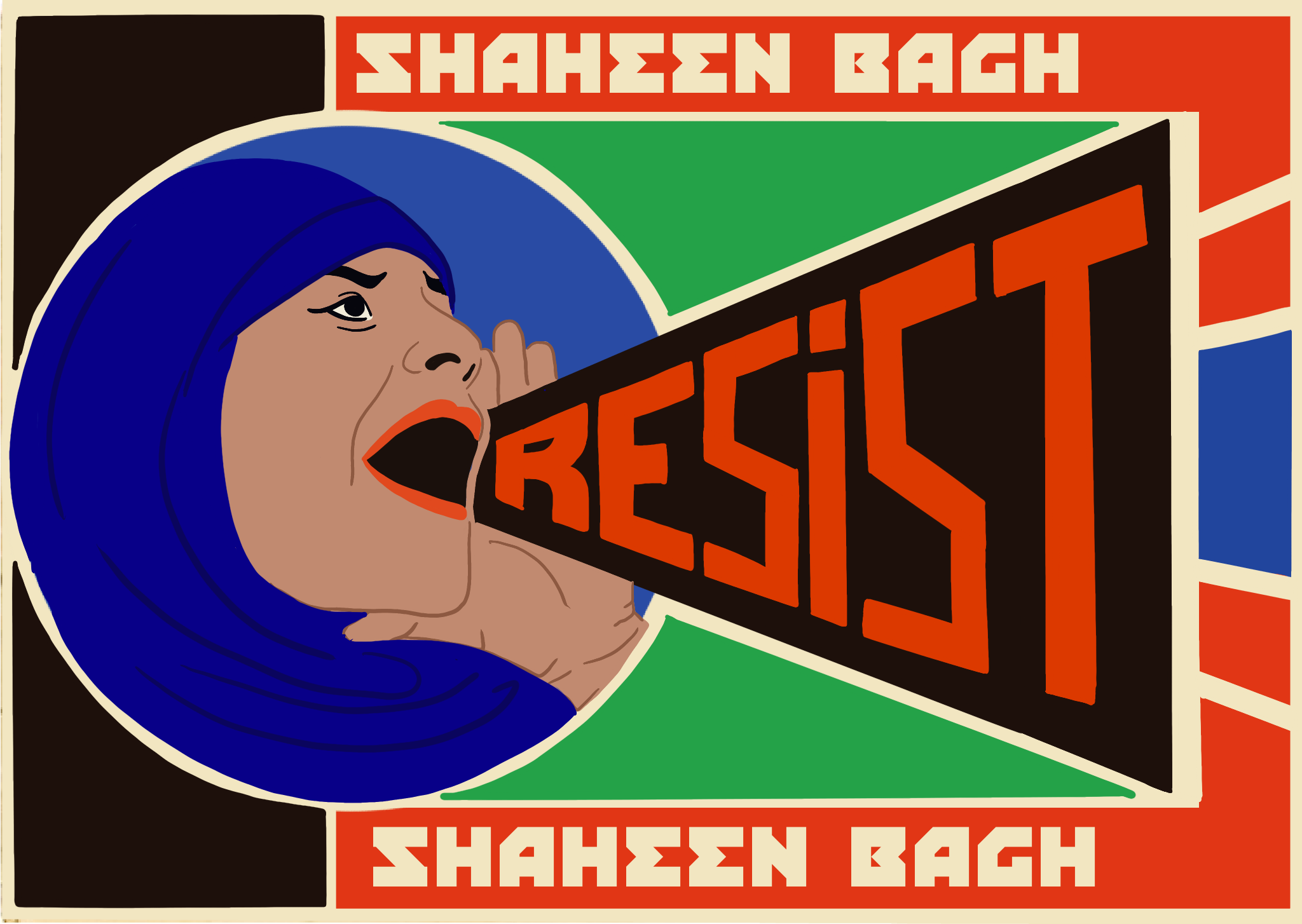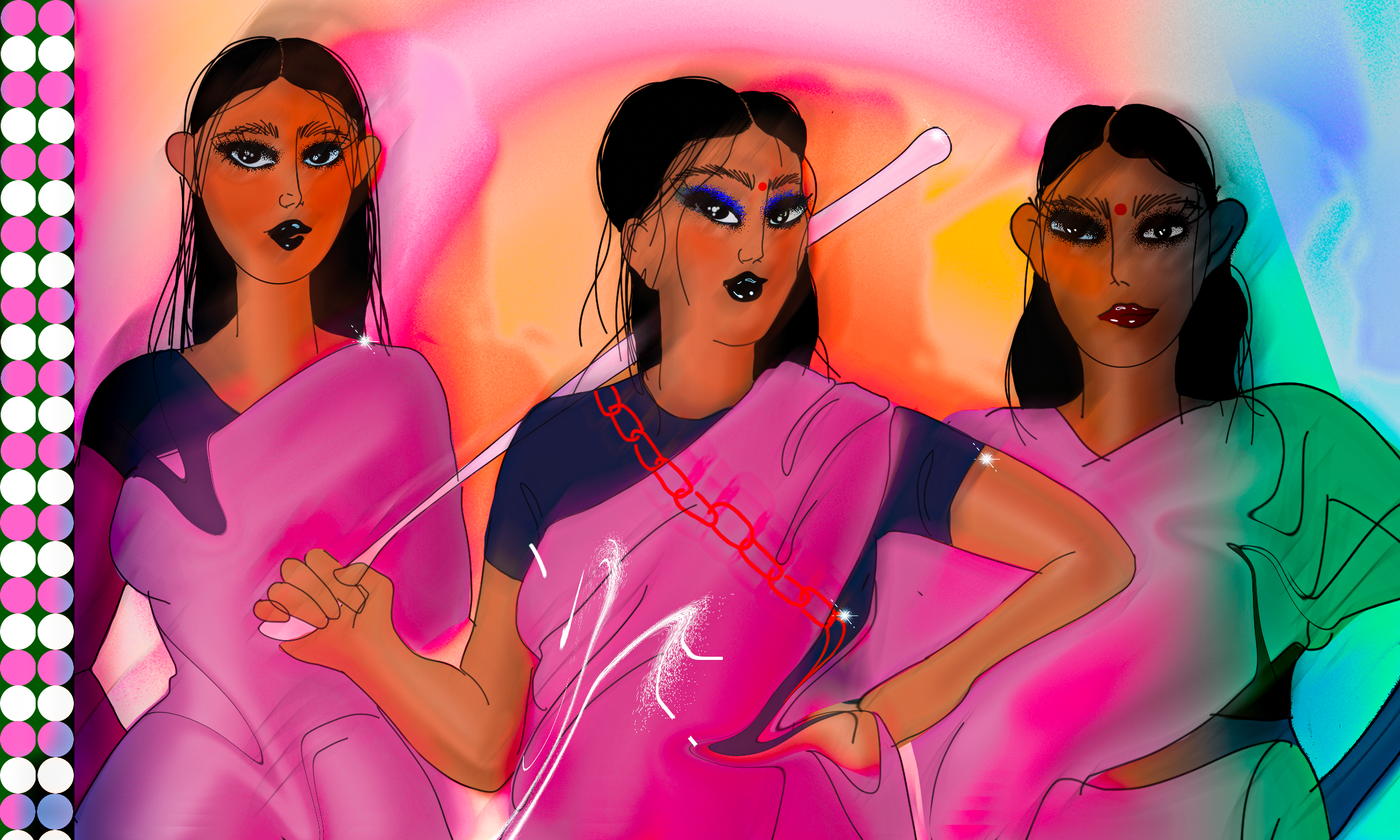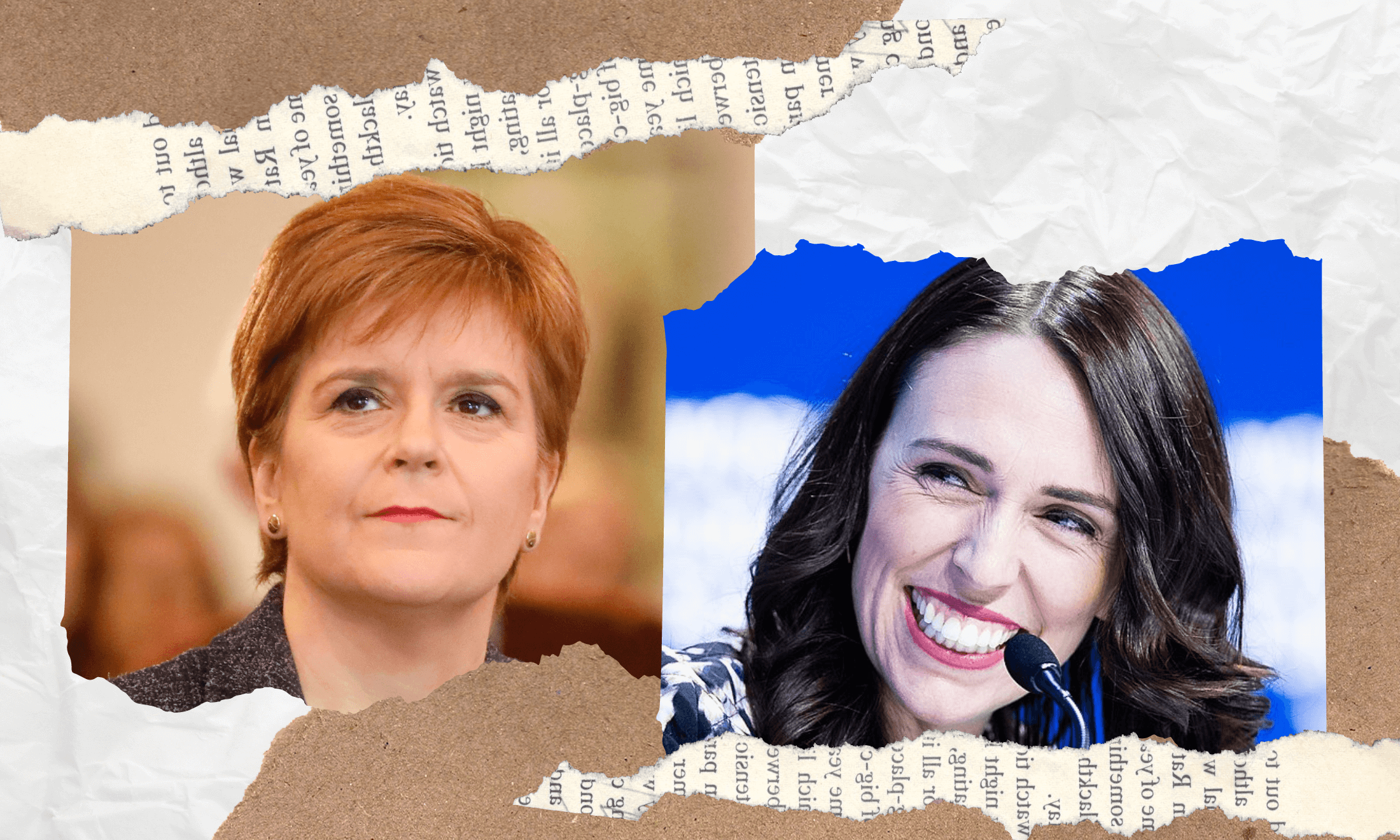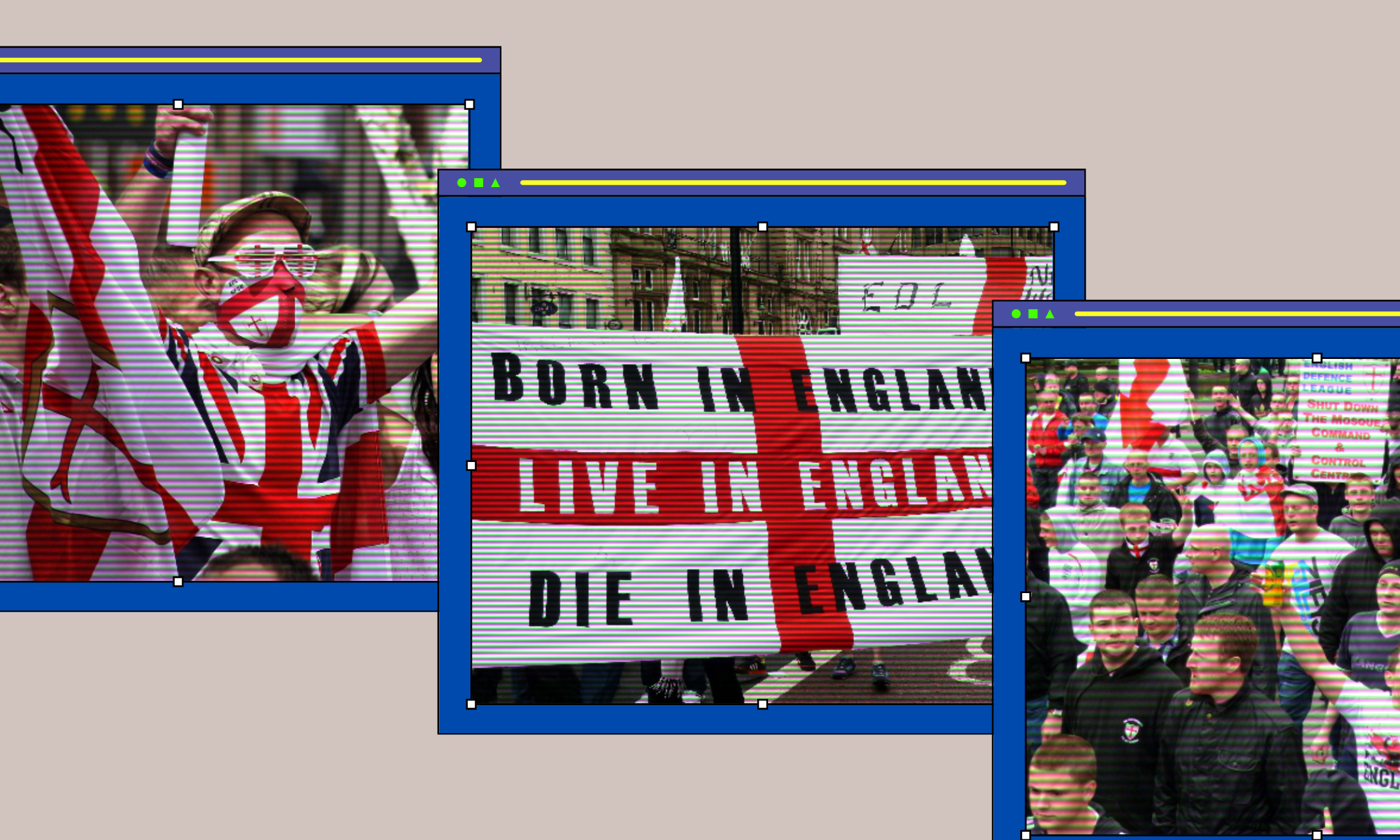
These are the young Indian artists fighting fascism on Instagram
Rising Hindu nationalism in India has anti-fascism protests breaking out across the country. But, as Meera Navlakha finds, young artists are making social media spaces powerful sites of resistance too.
Meera Navlakha
03 Mar 2020
Look through Shubham Waydande’s Instagram page (@invalid.psd) and you’ll see bursts of angry colour splattered across the faces of Indian politicians. Frequently, artwork on the grid depicts politicians as characters from recognisable pop-culture touchstones, like Rick and Morty or Grand Theft Auto. Other times, the work mixes in historical references, like a recent rendering of Indian Prime Minister Narendra Modi as a zombie, his pupils replaced by swastika symbols and his face coloured a vivid blue and rotting.
Maybe a few years ago, the Instagram feed of a fine arts student wouldn’t be the cause for any trepidation. But it’s 2020 and an authoritarian government is on the rise in India. Shubham’s family is scared, he tells gal-dem. They fear that his provocative art and political dissent will spark threats or violence, putting him in danger.
“But I don’t worry,” he says. “I know that when art tells the truth, it will offend people. Any response to art is good”.
Shubham, who hails from a small industrial town near Mumbai, India, is one of many young artists in the country combining the transcendental power of art with the expansive influence of social media to protest rising levels of state-led Hindu nationalism. This is their mode of resistance.
Since India elected Modi in 2014, the landscape of Indian society and politics has shifted dramatically. Now well into his second term of ruling the world’s largest democracy under the Bharatiya Janata Party (BJP), Modi has propelled the BJP’s historically nationalistic policies into unchartered territory. The country has seen a sharp increase in these sentiments, which have morphed into tangible attacks on anything that is deemed a threat to Hindu nationalism, particularly the country’s population of 172 million Muslims. Islamophobia has pervaded political discourse, resulting in widely criticised decisions such as the government’s revoking the special status granted to Jammu and Kashmir, a Muslim-majority state.
Most recently, the country has seen protests against the approval of a new law, the Citizenship Amendment Act (CAA). The law puts India’s secular nature into serious peril. Under its terms, the CAA grants citizenship to all illegal migrants from Pakistan, Bangladesh, and Afghanistan – if they are not Muslims. Migrants from all other major religions will be given the chance to have their citizenship fast-tracked. It’s a brazen first step to making thousands of Muslims in India stateless. And it’s not gone unchallenged.
Since December, Indians have taken to the streets, protesting against the BJP and its bigotry. Throughout January, protests took place across prominent Indian universities. Violence ensued at the hands of a pro-BJP mob and the police failed to defend students in the wake of the attack. In February, protesters held an interfaith prayer ceremony in Shaheen Bagh, New Delhi’s predominantly Muslim neighbourhood. In recent weeks, action has turned fatal; a mosque was burned to the ground and the death toll has risen to 35 people, prompting media outlets to call this the worst communal clashes between Hindus and Muslims in decades.
Artists like the anonymous Tyler Street Art are speaking out about what they view as a burgeoning wave of fascism in India. The Mumbai-based graffiti artist is known as the city’s Banksy for his defiant works of art, daubed across the city’s walls.
But elsewhere, the internet is becoming a hotbed of political action for sketch artists, graphic designers, and painters. Using Instagram as their primary platform, a community of protestors has been established, who provide up-to-date information on the political climate of the country, exhibit posters and GIFs that depict the rise of fascism within the government, and share daily empowering quotes. This pop-culture form of protest has allowed for political dissent to reach Indians globally.
Alia Sinha (@minor_grace) is one of those artists and has always found Instagram to be a supportive space to share the personal in conjunction with the political. She describes her colour-infused, delicate graphics as “whimsical” and “diary-esque”, with a focus on body positivity, sexuality and minority communities within India. But more recently, the introduction of the CAA has shifted the message of her artwork to portray the “draconian and exclusionary” policies that are fracturing Indian society.
“I consciously choose to take a playful approach to articulate resistance”
Previously, her work was centred almost entirely around women, with caricatures, drawings, and graphics portraying mothers and children or people supporting one another. But there’s been a distinctive change on her grid; her vivid designs now incorporate political messages prompting society to fight fascism. Her drawings are reposted on accounts dedicated to political art, like @art.of.resistance, and @povmumbai. Despite artwork that focuses on optimism and community, Alia notes a rising climate of fear that has wrapped itself around her life and the lives of people she loves.
“There has been a general atmosphere of isolation and private terror,” she says. “This has polarised people everywhere, severely affecting familial and other relationships.”
Nevertheless, she chooses to combat this via a brighter form of artistic opposition.
“My work reflects on day-to-day shifts and concerns,” says Alia. “I consciously choose to take a playful approach to articulate resistance”.
When protests broke out at Jamia Milia Islamia University in December 2019, Nayanika Chatterjee (@isthisart_) was in London, where she is currently pursuing a master’s degree at the Royal College of Art. Unable to be physically present at the demonstrations in New Delhi, Nayanika sought another channel where she could voice her anger at the government and play a role in the collective resistance movement.
“I felt utterly powerless being so far away from home,” Nayanika said. “I decided to make artwork that would help spread awareness regarding the cases of extreme police brutality taking place in the national capital”.
Amongst the most effective and widely shared examples of her work are hand-drawn animations, accompanied by sound recordings from the protests. She says these slogans infuse her work with the “energy” of the protests. But, as with many artists, Nayanika’s graphics have been subject to censorship. Instagram has taken down posts from many artists who address the CAA and the rise of intolerance in the nation, while BJP supporters report uploads in an attempt to silence the discussion. But these artists, like Nayanika, continue to share their projects.
While accounts specifically dedicated to Indian political dissent in art (such as @art.of.resistance) have amplified Nayanika’s work, she has also been featured on The Curator Magazine’s account (@thecuratormag): an Indian publication aiming to provide an inclusive space for discourse within the arts. In December 2019 – at the height of the violence at universities – the magazine shared one of her hand-drawn black and white animations, with the voices of protesters echoing in the background. “Here’s a wake up call,” read the caption, vowing to share the work of artists who are “fighting the good fight.”
“Indian youth need to start right from their households by having discussions at home to try to out reason bigoted voices,” says Nayanika. “There is so much being done now. It is heartening to see the amount of art that has come out of this movement”.
There is a price to pay, though. Dissent and resistance on social media platforms can be met with a backlash; some artists have had their art removed, even while the pieces call for peace and tolerance. Others face ramifications in their inner circles – both Alia and Nayanika have experienced tension after condemning signs or outright notions of prejudice from family members and people in their communities on WhatsApp groups.
Recently, director for South Asia’s chapter of Human Rights Watch declared that dissent is being systematically curbed throughout India. There is plenty of evidence to support the claim; throughout 2019, journalists have been detained after criticising Modi and his cabinet. Take journalist Aatish Taseer, who wrote a TIME cover story in May 2019, titled “India’s Divider in Chief” with a photograph of Modi. One month later, his Overseas Citizenship of India (OCI) status was revoked.
“One of her most widely-shared pieces is a drawing of a man in the middle of the Indian flag, braced like Atlas as if attempting to hold the weight of his country on his shoulders”
For some, this climate means their art has to be produced under the banner of anonymity. Under handle @smishdesigns, Mumbai-based Anya* shares topical, yet deeply personal artwork with 23,000 followers. Anya has found her art to be a form of healing to combat internal angst and repression, sharing work that references violence against women, police brutality, and the need for environmental changes at the hands of the government. She says her work took on an even more explicitly political edge after the 2019 election. Her posts exhibit an impressive range of artistic tools: intricate pen drawings, graphic posters, illustrated animations.
One of her most widely-shared pieces is a drawing of a man in the middle of the Indian flag, braced like Atlas as if attempting to hold the weight of his country on his shoulders. Fellow graphic designers have used Anya’s drawing to create new works, while Anya also frequently posts other artists on her Instagram stories, sharing the thoughts and illustrations of those who create like-minded work.
“My Instagram page has become a medium for me to express myself in the purest form that I know,” says Anya, who adds that she gets trolled daily for her work.
“I am honestly overwhelmed by how much people connected with my artworks. People protesting online or on the streets [used] my artworks as their form of venting and expression and I am glad my work could do that for them”.
“Standing up for what’s right and humane has become more of a need now than ever”.
This online community is as heterogeneous as India itself. There are some who are Hindu, some Muslim, some who don’t align themselves with any religion at all. No single identity marker – gender, location, or faith – connects them. But collectively, there is angst and also a sense of betrayal from those in power. They are afraid at the prospect of the situation in India worsening.
At the hands of the government, the secularism written into India’s constitution is now more precarious than ever before. Art has become power for the younger generation. While the political turmoil shows no signs of slowing down, neither do these young artists. “For a sustainable revolution, [we] need to continue using social media platforms and voices on the streets,” says Anya. “Artists need to come forward to enable people to associate and express their inner suffering”.
*Names have been changed









